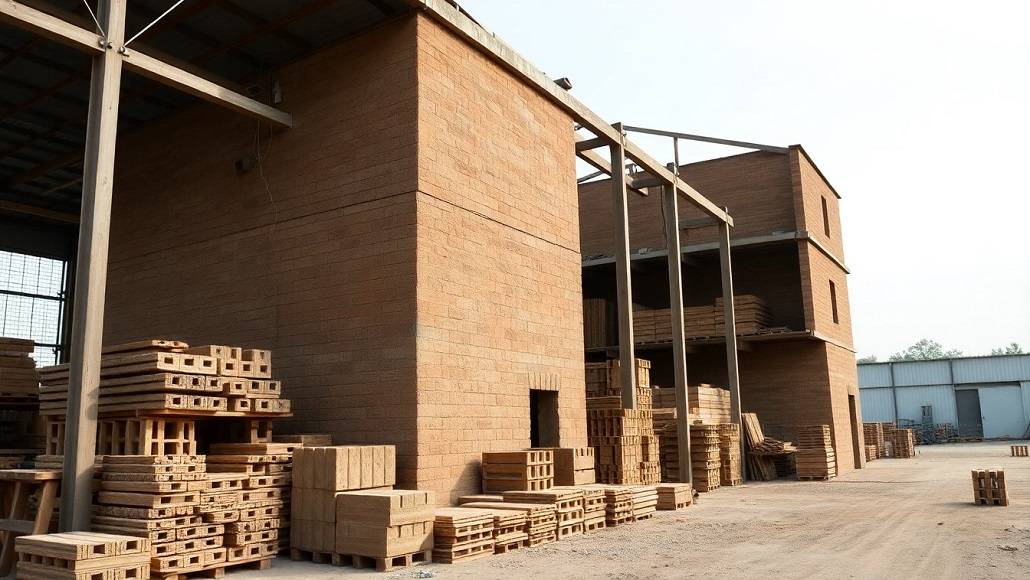Sourcing and Innovation: Asia’s Leadership in Building Materials Manufacturing
Asia has been a force to be reckoned with in the world of building materials manufacturing over the last few years, with China, Thailand, and Vietnam taking the lead. This surge is not volume alone but also has a strong focus on sustainability and innovation. As the need for sustainable and innovative building materials increases as part of global environmental objectives, the role of Asia in innovation and sourcing becomes more important. This piece discusses how the countries in this region are determining the future of building materials, forecasts what’s next, and discusses how companies can evolve to stay competitive.
Dominance of Asia’s Building Materials Manufacturing
The global construction materials market is projected to hit $1.4 trillion by 2025, with much of that growth fueled by innovations from Asia, a report by Research and Markets indicates. China, the world’s largest producer and consumer of building materials, is a vital cog in this system. With more than half of world cement production and much of steel production, China is poised to maintain its leadership in the sector. As a nation, it has emphasized producing high-quality yet affordable products, which is further being augmented by a growing emphasis on sustainability.
Thailand and Vietnam are also emerging as important players in the building materials sector. In Thailand, the government has initiated various programs to encourage green construction, such as the use of environment-friendly building materials. For example, the Thai Green Building Institute has played a crucial role in promoting the adoption of new age building techniques that minimize environmental footprint. These involve incorporating local resources like bamboo and recycled products into building designs.
Vietnam is also standing up as a center for sustainable building materials. Vietnam has been a forerunner in the manufacture of environmentally friendly bricks and tiles, using local materials to reduce carbon emissions from transportation. By adopting environmental sustainability, the country not only gains prestige in foreign markets but also complies with global environmental standards.
Sustainable Materials: A Key Focus
With the growing emphasis on green building practice, nations like Indonesia and India are adopting materials such as reclaimed wood, recycled glass, and bamboo into their construction sector. Bamboo, alternatively known as “green gold,” is a fast-growing renewable product that has been noticed for its high strength, flexibility, and ecological sustainability. In India, programs such as the National Bamboo Mission seek to increase bamboo production and use in building construction, thus developing local economies and minimizing carbon footprints.
Recycled glass is a new-age material that is revolutionizing the construction sector. In Indonesia, companies are now using recycled glass extensively in numerous applications, ranging from aesthetic tiles to thermal insulation panels. This not only solves waste management problems but also brings with it distinctive aesthetics that appeal to green consumers. The utilization of reclaimed wood, obtained from recycling existing constructions or pieces of furniture, is increasingly popular due to its charm and sustainability. Upcycling materials helps builders decrease waste while providing character and warmth to new designs.
The adoption of these materials reflects a broader trend towards sustainable building practices across Asia. According to a report by the International Finance Corporation (IFC), the green building market in Asia is projected to grow significantly over the next decade, driven by increased awareness of environmental issues and the benefits of sustainable construction. This shift not only aligns with global goals but also addresses local challenges related to resource scarcity and environmental degradation.
Innovations Driving the Industry Forward
With increasing demand for sustainable building materials, so too does the industry need to innovate. New technologies are allowing manufacturers to create new products and methods that better serve the changing needs of the construction industry. For example, advancements in 3D printing technology are transforming the production of building materials. This new method enables the production of intricate structures with less matter and energy and therefore decreases waste and environmental footprint.
Additionally, the use of smart technology in building materials is increasing. Smart materials with sensors are able to track structural stability, sense moisture levels, and react to environmental changes. This extent of innovation not only increases the strength of buildings but also makes a general contribution towards safety and efficiency.
Aside from advancements in technology, industry-academic collaboration is equally important in advancing innovation in building materials production. Collaborative research partnerships among government agencies, research centers, and private sector companies can result in the formulation of new materials and methods that challenge conventional construction techniques. For instance, research efforts that encourage the study of bio-based products and sustainable composites are on the upswing and can radically change the face of the industry.
Preparing for the Future
As we point toward 2025 and beyond, companies in the building materials sector need to keep up with the times. One of the most important ways to remain successful is to embrace sustainability as a guiding principle. Businesses that make environmentally friendly practices a priority not only become more marketable, but they also place themselves ahead of the game in terms of responsible production.
Additionally, businesses should invest in research and development to explore innovative materials and technologies. By staying informed about emerging trends and actively participating in industry collaborations, companies can lead the way in sustainable construction practices. Furthermore, educating consumers about the benefits of sustainable materials can help drive demand and create a more environmentally-conscious market.
Multifunctional spaces in residential and commercial building cannot be ignored. With urbanization forging on and changing the way people live and work, there will be an increasing need for flexible spaces that can be used for a wide range of requirements. Builders and manufacturers who concentrate on developing materials that help to deliver flexible designs will be able to benefit the most from this changing environment.
Conclusion
In summary, innovation and sourcing: dominance of Asia’s building materials manufacturing for building is defined by high emphasis on technology and sustainability. As nations such as China, Thailand, and Vietnam become centers of green and innovative construction materials globally, the sector is ready for massive expansion. The incorporation of eco-friendly materials, including bamboo, recycled glass, and reclaimed wood, indicates a focus on solving environmental issues while improving the quality of living and working environments.
As we look to the future, companies need to actively adopt these trends, invest in innovation, and make sustainability a priority if they hope to compete. The path towards a greener, more efficient construction sector is already well established, and Asia is spearheading the drive towards a more sustainable world. Through ongoing cooperation, technological innovations, and attention to consumer education, the region will define the future of Asia’s building materials manufacturing for decades to come.





























